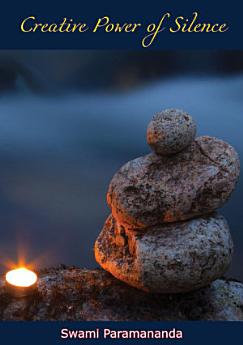Creative Power of Silence
About this ebook
Prior to spiritual studies, the idea of complete silence is strongly advocated by many. In practicing the silence, it is found to unfold our higher nature. The silence allows concentration. With the intrusion of noise, the mind cannot be receptive.
Contrary to some belief, the silence is not to free the mind to allow emptiness. It means co-ordination of body and mind. It reduces friction and becomes a definite factor for our concentrated thought. The silence is essential for all forms of study. “A silent being is a very restful being. All wise people realize the deeper part of our nature can only be expressed effectively when our outer being is still.”
Ratings and reviews
- Flag inappropriate
- Show review history
About the author
Swami Paramananda (1884-1940) was a swami and one of the early Indian teachers who went to the United States to spread the Vedanta philosophy and religion there. He was a mystic, a poet and an innovator in spiritual community living. He was born on February 5, 1884 as Suresh Chandra Guhathakurta, the youngest son of a prestigious Guhathakurta family, in the village of Banaripara in the Barisal District (now part of Banaripara Upazila, Bangladesh). He began reading devotional texts at age 16, and on his 17th birthday joined a group of older men from the village in a journey to Belur Math to visit the monastery and temple founded by Ramakrishna’s disciples. There he met his teacher, Vivekananda, the foremost disciple of Ramakrishna and the first swami to teach in America. He was initiated a month before his 18th birthday, becoming a monk (sannyasin) of the Ramakrishna Order and the youngest disciple of Vivekananda. He trained under the mentorship of Ramakrishnananda, also a direct disciple of Ramakrishna, and founder of the Madras Math, a thousand miles south of Calcutta. In 1906, at age 22, Paramananda was sent to America to assist at the previously established New York Vedanta Society, where he lived and taught until 1909. That year he established the Vedanta Centre of Boston and founded the “Message of the East,” the first Vedanta periodical published in the U.S., offering articles, poetry and commentary on all religions in its monthly (and later quarterly) magazine. He authored translations of the Bhagavad Gita and The Upanishads, as well as four volumes of mystical poetry: “The Vigil”, “Rhythm of Life”, “Soul’s Secret Door” and “My Creed.” Paramananda founded four centres still thriving today, two in the United States and two in Calcutta, India. He lectured throughout the U.S., Europe and Asia for thirty-four years, up until his death in Cohasset, Massachusetts on June 21, 1940, aged 56.







